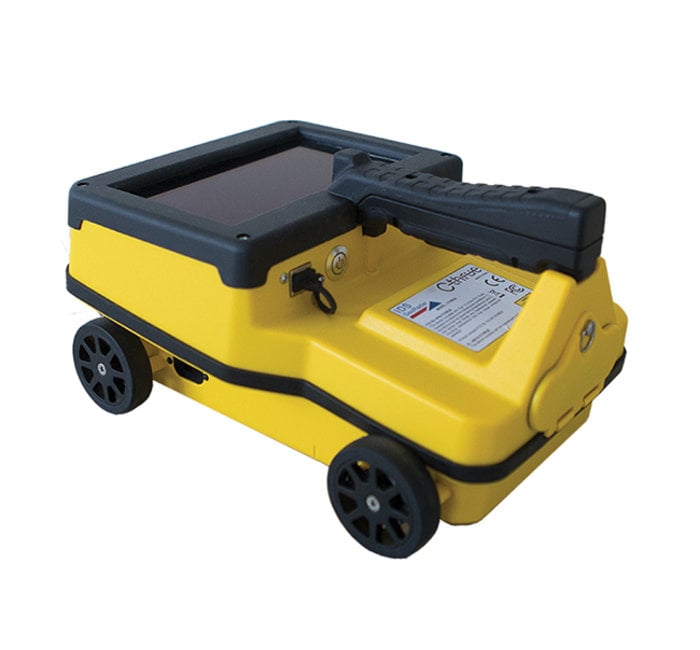Regional RainierGPR Service Areas for Precision Concrete Scanning
Regional RainierGPR Service Areas for Precision Concrete Scanning
Blog Article
Concrete Scanning: A Crucial Step Towards Guaranteeing Architectural Honesty and Security
In the world of building and construction and facilities upkeep, the relevance of concrete scanning can not be overstated. By utilizing sophisticated technology and methodologies, concrete scanning serves as a crucial device in guaranteeing that the honesty and safety of bridges and buildings are upheld to the highest requirements.
Relevance of Concrete Scanning
Concrete scanning plays a vital role in making sure the structural integrity and security of structures and infrastructure jobs. By making use of advanced innovations such as ground-penetrating radar (GPR) and electromagnetic induction, experts can non-destructively inspect concrete structures to discover possible problems, spaces, ingrained things, and reinforcement design. This procedure makes it possible for very early discovery of anomalies that might endanger the security of a framework, stopping pricey problems and ensuring the security of passengers.
Concrete scanning is particularly crucial throughout the preparation and building and construction phases of a task. Prior to boring, reducing, or coring into concrete, scanning aids identify the precise locations of rebar, post-tension cables, and various other ingrained aspects, reducing the risk of unintentional hits that might result in structural weak points. Furthermore, concrete scanning aids in high quality control by confirming the density of concrete covers and discovering any kind of disparities that might affect the general toughness of the framework. Eventually, buying concrete scanning services is not only a proactive measure to mitigate threats yet likewise an essential step in the direction of keeping the lasting security and stability of structures and framework.
Innovation for Concrete Evaluation

Advantages of Very Early Discovery
Timely detection of structural concerns can considerably alleviate dangers and make certain the longevity of building and construction jobs. By recognizing possible troubles beforehand in the construction process, stakeholders can take proactive measures to address concerns prior to they rise right into bigger and a lot more expensive issues. One of the essential benefits of early discovery is the avoidance of architectural failures, which can pose serious safety dangers and bring about task delays and financial losses.
Moreover, early detection permits prompt repair work and maintenance, which can help expand the lifespan of the structure. By resolving problems without delay, building groups can avoid costly fixings or also the need for early substitute of architectural components. This aggressive method not only conserves time and cash however additionally improves the overall safety and security and durability of the building and construction job.
Additionally, very early detection can boost job preparation and decision-making by supplying stakeholders with valuable understandings into the problem of the framework. Armed with this details, job managers can make enlightened options pertaining to building timelines, materials, and approaches, resulting in more reliable and effective task click here for more info results.
Guaranteeing Architectural Security
Making sure the architectural security of a building job is vital to its safety and security and long life. Concrete scanning plays a critical duty in making sure architectural security by identifying possible concerns such as spaces, delamination, or reinforcement corrosion that could compromise the honesty of the framework over time.
By using sophisticated scanning innovations like ground-penetrating radar (GPR) and electromagnetic induction, construction specialists can non-invasively check concrete frameworks to recognize areas of concern beneath the surface area. This positive method allows for the very early discovery of problems or weak points, making it possible for timely repair work or support to avoid structural failures.
Routine concrete scanning during various construction phases and throughout the life process of a structure can aid preserve its security, minimize threats, and make sure the safety of owners. By prioritizing architectural stability via concrete scanning, building and construction tasks can enhance their resilience and durability, eventually adding to higher safety and durability.
Protecting Against Important Failures
To guard versus catastrophic occasions, careful monitoring and proactive upkeep are imperative in preventing critical failures within architectural structures. Detecting prospective concerns before they rise is crucial to avoiding architectural failings. Executing routine assessments, such as concrete scanning, can reveal covert flaws like gaps, cracks, or rust that could jeopardize the stability of a framework. By utilizing advanced scanning modern technologies like Ground Permeating Radar (GPR) or Concrete X-ray, designers can non-destructively examine the problem of concrete and identify weak points that need support or fixing - RainierGPR Service Areas.

Final Thought
In verdict, concrete scanning plays a vital function in making sure architectural stability and security view by utilizing sophisticated innovation for early discovery of possible problems. This positive technique assists avoid vital failures and ensures the security of frameworks. It is necessary to focus on concrete evaluation as a conventional practice to safeguard the longevity and safety and security of structures and facilities.
Concrete scanning plays an important role in guaranteeing the architectural stability and safety of structures and facilities projects. Additionally, concrete scanning from this source help in high quality control by verifying the density of concrete covers and discovering any type of discrepancies that may impact the overall resilience of the framework. Concrete scanning plays a critical function in making certain structural security by discovering potential concerns such as voids, delamination, or support corrosion that might compromise the honesty of the framework over time.

In conclusion, concrete scanning plays a vital function in ensuring architectural honesty and safety and security by making use of sophisticated modern technology for very early detection of potential concerns.
Report this page